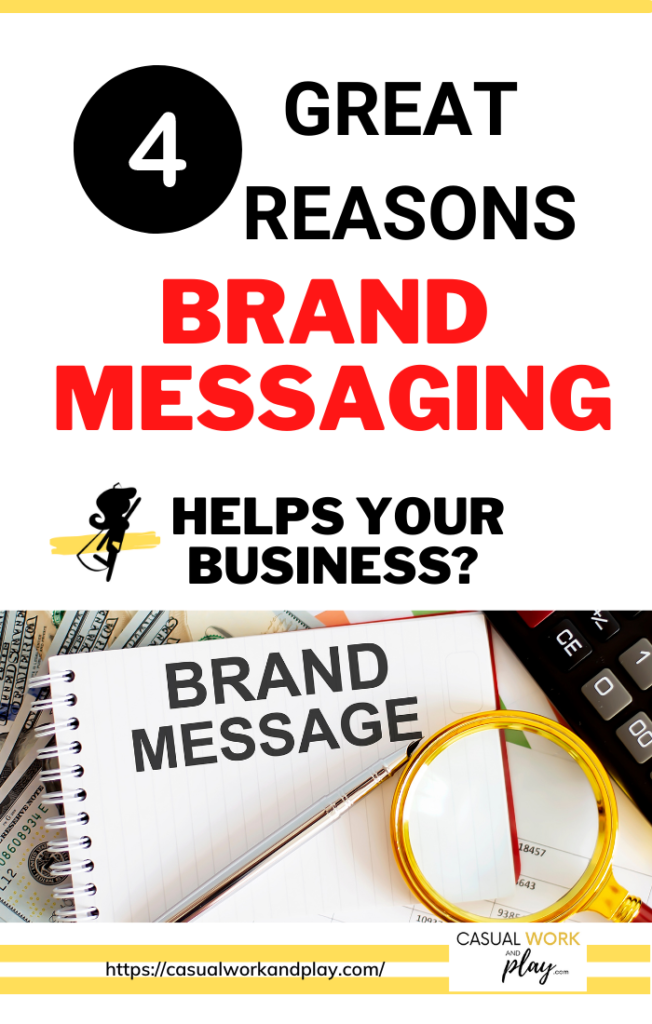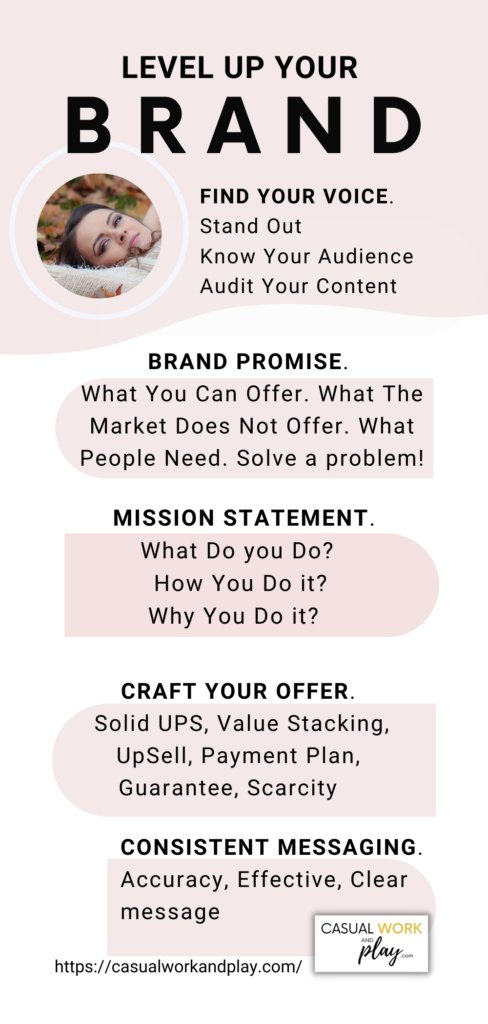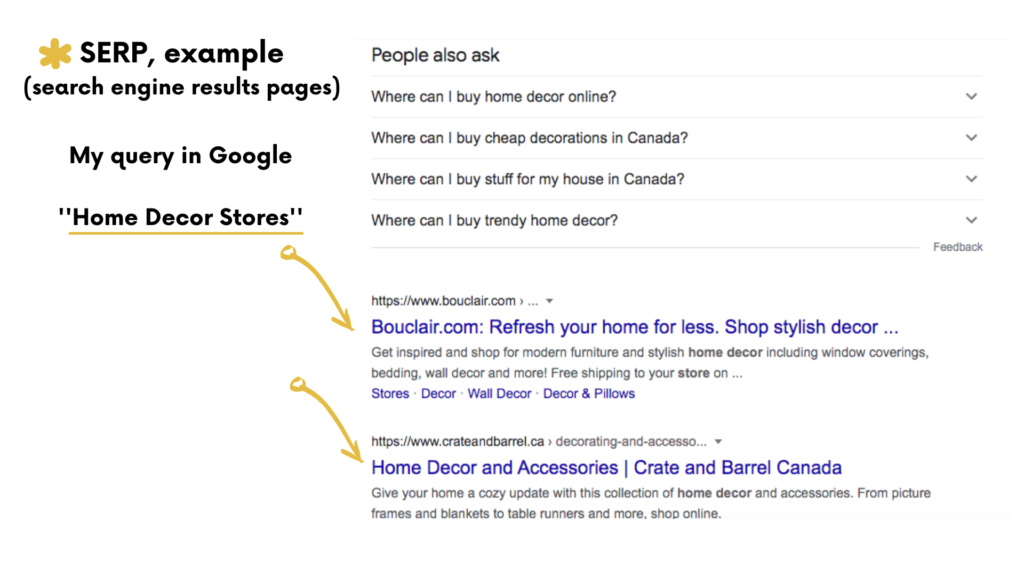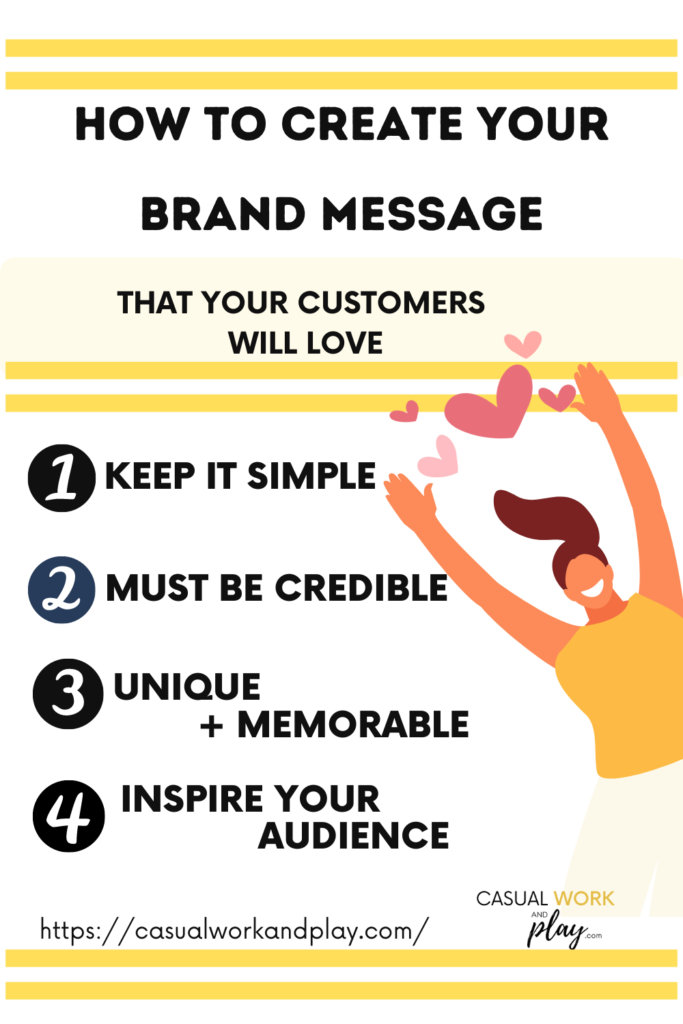How to Build Your Brand Strategy that Connects

What is Brand Messaging Strategy?
Brand messaging strategy can communicate who your brand is – and every element of the content should do precisely that.
Are you looking to create a successful brand messaging strategy? If so, you’ve come to the right place. This article will share seven ways to create a successful brand messaging strategy. We’ll discuss how to clearly define your target audience, create messaging that resonates with your audience, and more. So if you’re ready to learn how to create a successful brand messaging strategy, read on.
Persuading consumers to choose a brand over its competitors is the goal of branding. Logos, colours, and fonts do not build a brand. Essentially, it’s about changing the perceptions of the audience to enhance the appeal of a business. A practical framework for brand strategy is essential to developing a successful brand strategy.
Brand messaging strategy is one of the most crucial factors that tie in and bring together your content. Thereby highlighting the underlying value proposition that it hopes to covey. Whether a product-centred campaign or a company-centred tagline, your brand messaging strategy is that your buyers can relate to it. Furthermore, it should fully communicate who and what your brand is all about.
Brand Messaging Framework
This brand strategy framework guides you on how to build brand strategies that connect.
Simply put, if you’re building a brand, you’re connecting your business with your audience through human engagement, which is why you need a brand messaging strategy.
Brand Values
Does your brand messaging strategy communicate your brand values clearly and coherently?
If not, perhaps it’s time to revamp and change your brand messaging strategy. To help your customers understand more about your brand values and relate to them better. But more importantly, you need a brand messaging strategy to motivate people to consider your brand. Therefore, know-how to use your product or services is best for them.
This post looks at seven ways to create a strong brand messaging strategy. As I understand it, before we get started, you must understand what brand messaging is and how your business can optimize its brand messaging strategy. Moreover, we share some of the brand messaging tools that may be effective for you, depending on your target audience, industry and business goals. So without further ado, let’s get started.
- Detailed Audience
- Competitive Analysis
- Differentiation & Positioning Strategy
- Human Brand Persona & Personality
- Brand Voice, unique tone of voice
- Communication Framework
- Brand Message
- Brand Storytelling Framework
- Marketing Strategy
How Does a Brand Messaging Strategy Help Your Business?
As far as I am concerned, your brand messaging strategy must be part of your digital marketing plan. We must cast some light on why brand messaging is so important. Your brand is your business’s first impression, and it helps you stand out from the crowd. Your brand communicates everything about your business – from your values to your mission. Here are a few reasons that a unique brand is indispensable for your business:
Reasons that a Unique Brand is Indispensable

- 1. Allows you to stand out
It is not uncommon to see small businesses pay $50 for a logo and get it done. However, there is a high chance that the logo is void of meaning. Therefore, it makes absolutely no sense to the business’ target audiences. A brand needs to be accompanied by a firm purpose. In my opinion, your brand can compel buyers to prioritize you over a competitor.
- 2. Increases your credibility
A clear and firm brand can portray your expertise. People will see you as a professional, listen when you speak, and ultimately, buy from you.
- 3. Creates customer loyalty
Powerful branding will elevate your business’ reputation, stature, and recognition. Your brand depicts the values that you stand for. From my point of view, it offers you the opportunity to create emotional connections with your customers. Once customers are emotionally connected to you, they will go the extra mile to buy from you.
- 4. Branding encourages consistency
A firm branding strategy means that you can maintain consistency and make quicker decisions regarding customer experience. I feel you will not spend hours deciding the fonts or colours of your logo depicting your brand message. An established brand styling guide allows many things to fall into place automatically.
Brand Message Strategy Target Audience
However, no single brand messaging strategy can work for different audiences. That doesn’t mean you have to create separate brand messaging strategies for multiple audience groups. I recommend you develop a plan that appeals to various audience groups with different needs and perspectives.
Therefore, you must create a solid, successful brand message to help you achieve all these objectives. Now let’s look at ways to develop an effective brand messaging strategy.
How to Create an Effective Brand Messaging Strategy?
Your brand messaging strategy should be consistent so that your customers can connect with your brand on an emotional level. It needs to reflect your brand’s values to build brand loyalty. You can use several ways to create an effective brand messaging strategy. Here we look at seven different ways that help your brand stand out.
Brand messaging Guideline

Make sure your brand messaging strategy is perfect by following these steps:
1. Establish a Unique Tone of Voice in Your Brand Message
Every brand message needs a unique tone of voice that others can resonate with easily. This allows you to connect with your potential audience, which is why it is critical for your brand message. It is one of the most important ways to convey your brand’s message.
Think of the tone as a tool that reflects your brand’s personality. It represents its values and all the possible benefits your brand brings to your potential customers.
When establishing a tone of voice for your brand messaging strategy, you need to consider several different factors, including:
. Knowing your audience
. Communicating everything about your brand in your brand message.
. Auditing your content and analyzing which form of communication provides the best results.
Here are a few strategies that you can use to establish your unique tone of voice in your brand message.
Stand out from the Competition with your Brand Messaging Strategy and Content
Create a strong brand messaging strategy to stand out from the competition. This message must be a strong attention grabber to capture your audience’s notice. Did you seize their attention? The ultimate goal of your message is to compel them to reply. I believe you should always have a plan on how you can do this regularly.
Take online blogs, for example. An online blog thrives on several factors, one of the most important of which is unique content creation. As you strive to stand apart from the competition, update your blog regularly. Therefore, use active and engaging posts relevant to your potential audience’s needs and wants. Make your updates providing your target audience an opportunity to connect with your brand. Thereby converting them into loyal customers.
Rely on Search Engine Optimization
As you establish a unique tone of voice, capitalize on search engine optimization (SEO) power. It is one of the most effective ways to improve the visibility of your brand message. So you can receive adequate traffic from search engines (for example, Google). Since SEO targets unpaid traffic, so for effective brand messaging, aim for over 1000 monthly searches and a competition score of less than 50.
SERP (Search Engine Results Pages)
As a rule, the page that a search engine returns after a user submits a search query. In addition to organic search results, before writing your blog post title, investigate it against the competition. I esteem that this tactic helps to rank your post on Google and improve your brand messaging.
SERP example, my query in Google for Home Decor Stores.

Some of the tools you can use is a unique tone of voice
- Use free Google Keyword Planner,
- Ahrefs, start a 7-day trial for seven days,
- Choosing the right topic and type of content,
- Setting goals for your content,
- Working with a suitable medium,
- Establishing frequency for updating the message,
- Take feedback from your audience.
2. Create An Effective Brand Promise
A brand promise is a tangible benefit your potential customers may enjoy if they opt for your brand. And hence, it is critical to connecting with the consumer by being inspiring.
However, as brands develop a brand promise, it is typical for them to over-promise and under-deliver. Such a brand messaging strategy can severely damage your brand’s reputation. Hence, it is a good idea to consider the brand promise and ensure you stay true to it. Moreover, it is also essential for brands to follow up on the brand promise that they created.
BMW’s “The Ultimate Driving Machine” and Nike’s “To bring inspiration and innovation to every athlete in the world” are just two examples of a brand promise.
Guidelines that help you create an effective brand promise.

- Keep it simple,
- Make it sound credible,
- Come up with something unique and memorable, and lastly,
- Let it inspire your target audience.
So, if you are looking for ways to create an effective brand promise that also allows your brand to stand out from the rest, as Apple’s Steve Jobs put it, “Think Different.”
3. Have A Well Defined Message
If you start your journey without knowing your destination, you will likely get lost and drive in circles. Hence, one of the best ways to create an effective brand messaging strategy or to level up the game is to have a well-defined message.
It’s a road that will take you to the destination you have set out for your journey. So, to develop a well-defined message, you may have to look back to your mission statement or the business vision. Once you revert to the single goal you set for your brand or the set of shared values for your business or brand, you will be able to create a comprehensive message for effective brand messaging.
4. What is a Brand’s Unique Selling Point for your Brand Messaging?
It describes what your company offers and the problem it solves, thus establishing the company’s market position. When you have a strong USP, it clearly articulates what makes you unique from your competitors. Your business’s uniqueness is what makes it stand out from the competition. Your potential customers decide whether they want you within a few seconds!
How is your business different from that of your competitors?
The answer to this question is in your USP or Unique Selling Point.
As a business owner, you need to analyze your industry and while you are doing so, pay special attention to your competitors. By knowing what your competition is doing, you can figure out your strengths and weaknesses. But the story doesn’t end here. As you identify your USP, translate it into the right words to create an effective brand messaging strategy or take it to the next level.
How do you define a unique selling point for your Brand Messaging Strategy?
A Unique Selling Point might include phrases such as “new and improved” or “more advanced” to emphasize some aspect of your product that is newer, superior, or more advanced than your competitors.
Strategic Messaging Examples of a USP:
- The benefits and the best aspects to consider
- An emotional experience
- Factors contributing to sales
- The main key difference
- An advantage over the competition
Brand messaging Examples
Below are the best brand messaging examples of unique selling propositions from the Best Canva Alternatives-Competitors for Graphic Design.
- Canva: Empowering the world to design. Launched in 2013, Canva is an online design and publishing tool with a mission to empower everyone worldwide to develop anything and publish anywhere.
- Visme: We’re not just a tool; we’re the whole workshop. Create visual brand experiences for your business, whether you are a seasoned designer or a total novice
- Abode Express: Express it, Quickly and easily make standout content from thousands of beautiful templates with the all-new Adobe Express. Available on the web and mobile.
- Design Wizard: Create impressive videos and image designs in minutes. Create Content in Seconds! Unleash Your Creativity; become a DesignWizard Now!
- Picmonkey: Power your brand with photo editing and design. Create scroll-stopping images for Facebook, Instagram, Youtube and more. Ads, logos? Them too.
5. Establish Your Brand’s Story
Every business has a unique story of how it came into existence. Similarly, every business also has a distinct reason for its presence. There is a story behind every business; the same is true with brands. Your business or brand may also have an account, so why not share it with your target audience such that it can serve as your brand message?
If you are looking for ways to create an effective brand messaging strategy, establishing your brand’s story is one of the possible ways of doing so. If you are unsure how to install a powerful brand story, here are three easy steps to come up with an inspirational anecdote.
Easy Steps for your Brand Messaging Strategy
- Think of your brand and recall how it all started. Note down your ideas linked to the past, present and future of your brand/business.
- Come up with a one-line statement that sums up your business or brand’s existence. You can think of the vision that you set for your brand.
- Create a story around the one-liner explaining what the brand means, how it connects with the target audience and many other things to inspire your potential customers to convert them into your brand’s loyal customers.
Since a powerful brand story works as a fantastic messaging tool, it’s one of the possible ways to create an effective brand messaging strategy.
6. Consistent Brand Messaging Across All Platforms
As you aim to improve the effectiveness of your brand messaging strategy, don’t forget to be consistent across all platforms. While it is easier said than done, and it is particularly challenging on social media, it’s one of the most critical aspects that ensure the effectiveness of your brand messaging strategy. After all, it’s how you tell your potential customers that they are interacting with the same brand even though the platforms are different.
So here is the key that will help you create a consistent message across all platforms. Make sure that your website, blog posts, social channels, and all other brand messaging campaigns should be talking to the same person – your target audience. And while it will be a brilliant way to transform your potential customers into loyal ones, it can also reinforce your brand promise, and your potential customers will be more convinced about your brand’s story.
7. Crafting Your Exceptional Offer, Selling a Commodity
Do you know how your brand will add value to your customers? Why is your product or service critical for your target audience?
Craft your exceptional offer by knowing your customer’s pain points and presenting your brand as a solution to all their problems.
Since a customer’s purchase decision is also based on emotions and logic, when your brand meets the feelings and needs of your target audience, it can stand out from the crowd. Some of the measures you can take to up the ante include:
Take Up The Ante
- Surveying on social media or via your email marketing efforts,
- Creating great content, such as blog posts or articles that are engaging and informative,
- Find ways to connect with your potential customers, such as creating and sharing posts encouraging readers to start a conversation in the comments section.
Now that you know what your target market wants, you must package it up and present it in an irresistible offer.
Dependable Elements that Explain an Effective Brand Message
How to Build the Best Value
After you observe the competition and perfect your product or service, you need to highlight the outcome. This is the value that your customer receives once they purchase your product. This value should be the best, whether economical pricing, luxury quality products, quick shipping, customer support, or above. Take your pick!
How to Choose Easily the Right Language
As a brand looking to grow and scale, you’re probably using multiple social media channels and your website to gain customers. When reaching out to customers on multiple platforms, it is crucial to be consistent with your language and messaging. After all, you wouldn’t want to confuse your audience. Every customer needs a reason to purchase your product or service over the other. Providing them with a solid USP (Unique Selling Proposition) that separates you from the others. In addition, customer reviews and ratings are a great way to encourage visitors to take that next step.
Go for Value Stacking
Innovative businesses know the value of not bragging about their brand but bragging about the solution value, they offer their clients. Because at the end of the day, it’s not about you- it’s about the customer finding solutions to their problems.
Cash in on the Power of Upsells
So, your customer is interested in a product? There’s no harm in unique upselling existing customers via email marketing or pop-up messages that appear on the page after your customer has made a purchase.
Come with Clear and Transparent Purchase Payment Plans
Your purchase payment plans should be clear and transparent. Also, offer multiple payment options to make it easier for customers to pay.
Best Offer Guarantee
If your product or service is worth it, there should be no qualms in including a guarantee to give your customers peace of mind once they’ve selected your company.
Get Attention by Creating Scarcity
Creating scarcity by adding a countdown timer or a date when the special offer expires is a great way to get an audience to take notice.
Takeaway
With the seven ways to create an effective brand messaging strategy, you can make your brand stand out and convert your potential customers into loyal ones.

Hey there, I’m a marketing and home decor specialist. Read more about me here: https://casualworkandplay.com/about/.
